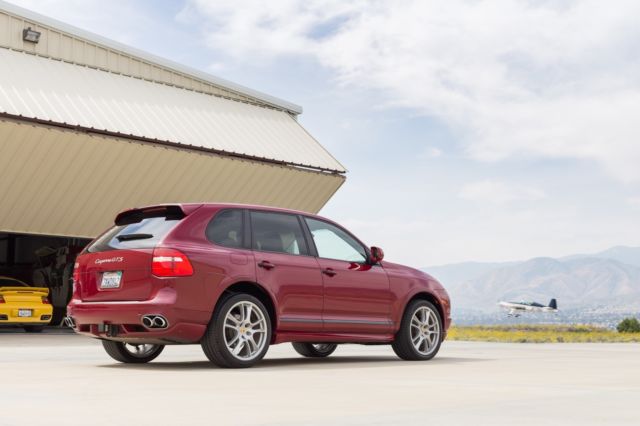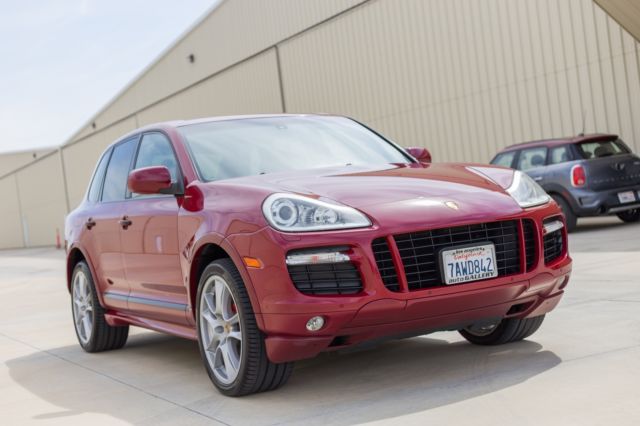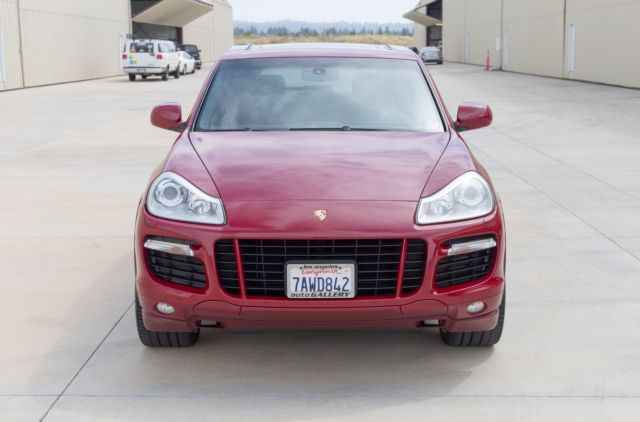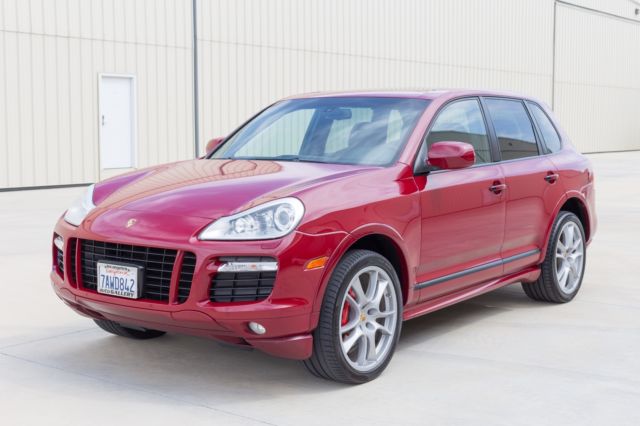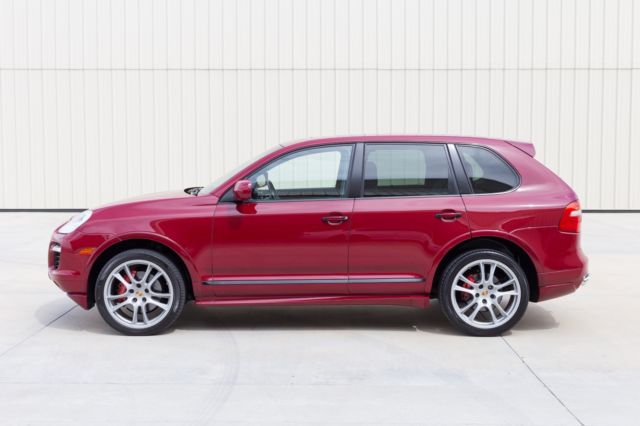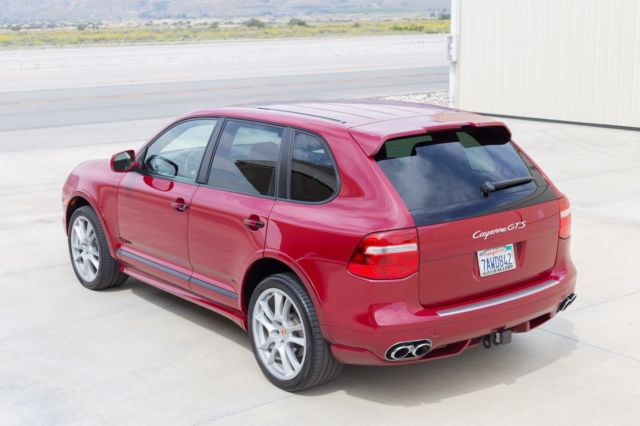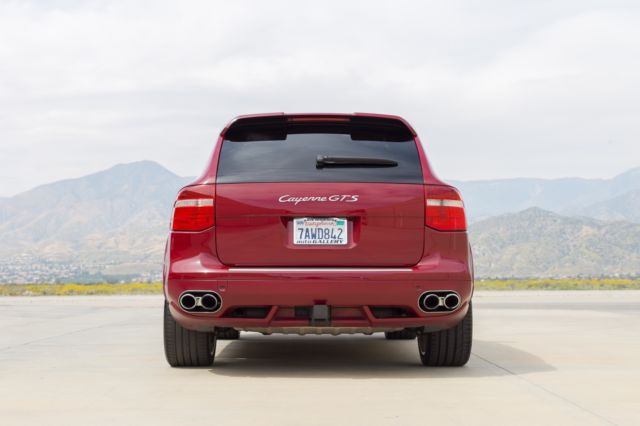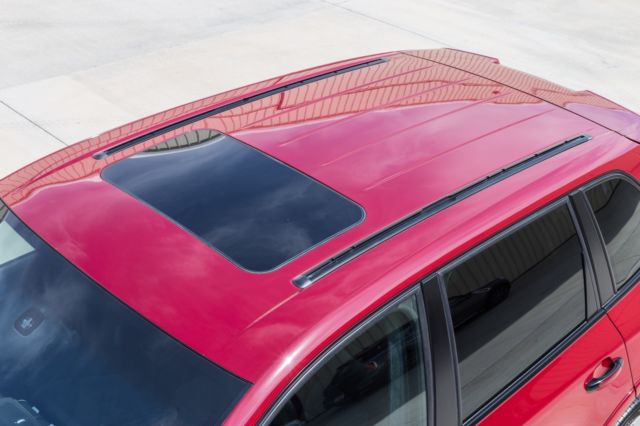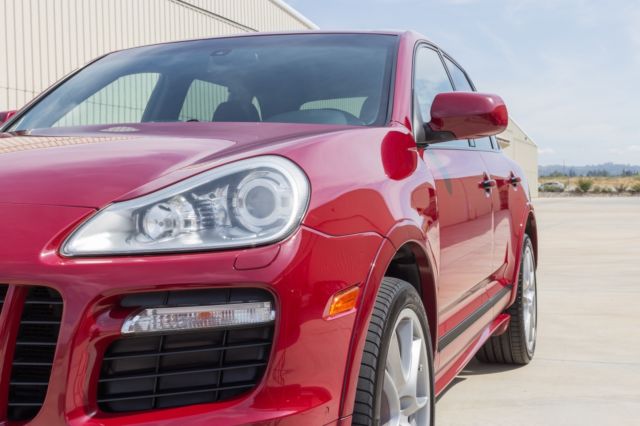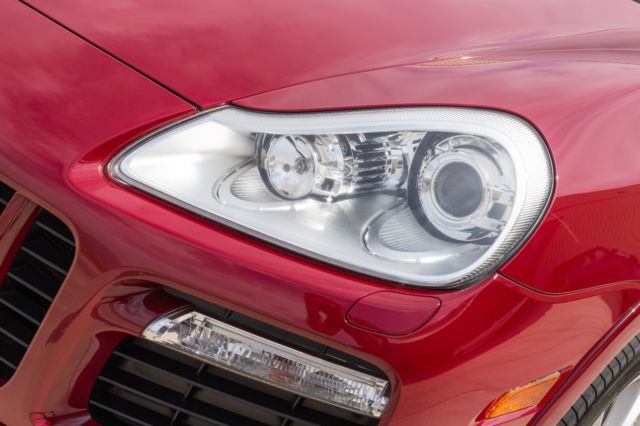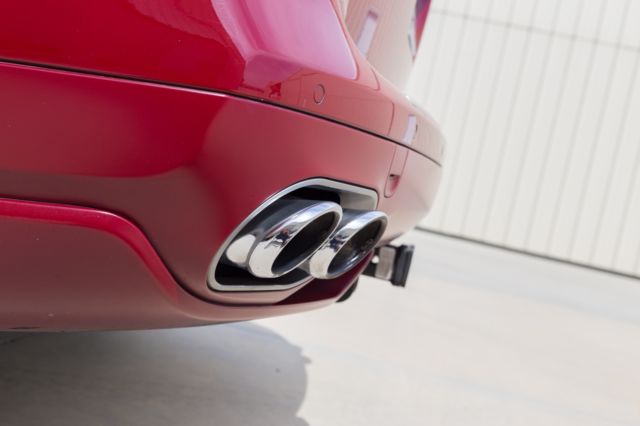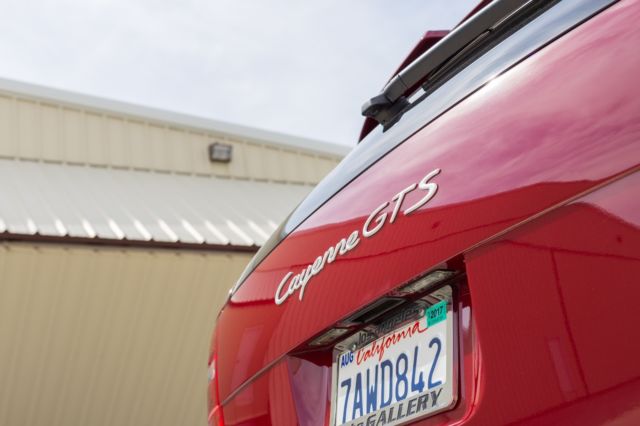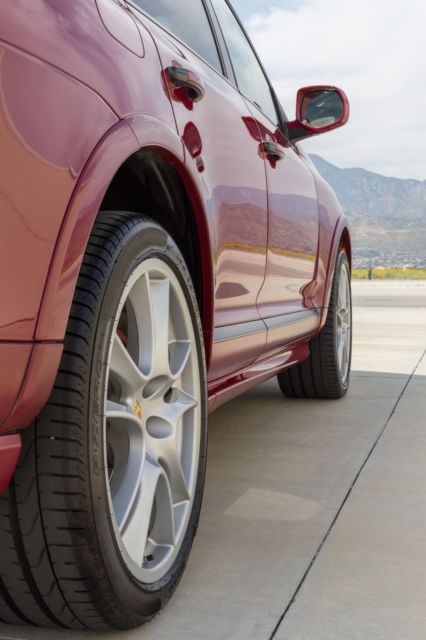2009 Porsche Cayenne GTS - Tiptronic S - Top of the line model w/ every option!
- Make: Porsche
- Model: Cayenne
- SubModel: GTS
- Type: SUV
- Trim: GTS
- Year: 2009
- Mileage: 98,501
- VIN: WP1AD29P59LA61276
- Color: Red
- Engine size: 4.8L V8
- Number of cylinders: 8
- Power options: Air Conditioning, Cruise Control, Power Locks, Power Windows, Power Seats
- Fuel: Gasoline
- Transmission: Automatic
- Drive type: AWD
- Interior color: Black
- Drive side: Left-hand drive
- Safety options: Porsche Adjustable Air Suspension, Anti-Lock Brakes, Driver Airbag, Passenger Airbag, Side Airbags
- Options: Turbo All Leather Interior, Porsche Active Suspension Management (PASM), Tiptronic S, Porsche Sport Exhaust, Alcantara Suede Full Interior Package, Porsche Wood Trim Package, Exterior Paint Color: GTS Red, Sport Seats, Padded Multi-Function Steering Wheel, Turbo Full Leather Dash, 4-Wheel Drive, CD Player, Leather Seats, Sunroof, 21-inch Porsche GTS Wheels, Park Distance Control
- Vehicle Title: Clear
- Interested?
2009 Porsche Cayenne GTS Description
Free local delivery is included with sale (up to 100 miles). Delivery to any USlocation is available, you can arrange it, or I can assist you with acquiring deliveryservices.Thank you for looking, please do not hesitate to contact me with any questions, and to schedule a visit to see the car: (909) 229-0125
Many more very detailed hi-res images can be viewed at the following link:
https://www.smugmug.com/gallery/n-GWVj7Q
Porsche Cayenne GTS info:
With an enhanced powertrain and lowered air suspension and 21 inch wheels and tires, the Cayenne GTS represents the top of the naturally-aspirated Cayenne range. Refinements by Porsche engineers sacrificed some of the Cayenne's inherent, off-road capabilities in favor of increased over-the-road dynamic performance. To that end, the engineers made lowered the air suspension and made modifications to the naturally-aspirated 4.8-liter V8 engine.
The drivetrain refinements resulted in a five-percent, or 20-hp, increase in horsepower—to 405 horsepower—above the Cayenne S. Responses to the driver's commands are further heightened by a 15-percent reduction in the drivetrain's final drive ratio, regardless of transmission. The Cayenne GTS is equipped with either the standard equipment six-speed manual gearbox or an optional six-speed Tiptronic S. The engine's power characteristics are optimized by a specially created sport exhaust system—which comes with the added bonus of a throaty, meaningful note from the dual-twin tailpipes.
Thanks to these enhancements, Porsche test drivers were able to accelerate the Cayenne GTS with manual gearbox on the track from zero to 60 mph (100 km/h) 5.7 seconds. The Cayenne GTS with Tiptronic is three tenths of a second quicker than its Cayenne S sibling, accelerating to 62 mph in 6.5 seconds. Track tested top speed for Cayenne GTS withmanual gearbox is 157 mph (253 km/h). The Tiptronic S variant tops out at 156 mph (251 km/h).
As impressive as is the performance of the Cayenne GTS is the fact that regardless of transmission choice, the vehicle carries no gas-guzzler penalty. The manual transmission model is rated at 11 mpg in the city and 17 mpg on the highway. The Tiptronic S improves efficiency by upping the ratings to 13 mpg in the city and 18 mpg on the highway. As astounding as is the vehicle's fuel economy is its Ultra-Low Emissions Vehicle (ULEV) certification. Thanks to their 4.8-liter V8 engines' direct fuel injection system working in concert with Porsche VarioCam Plus variable intake valve lift and timing, both the Cayenne GTS and the Cayenne S earn ULEV certification.
To ensure road-holding commensurate with its added engine output, the Cayenne GTS has a standard air suspension, which sits 0.78 inches lower than the other Cayenne models with air supsension, complete with Porsche Active Suspension Management (PASM) as standard. To ensure more than adequate traction, the Cayenne GTS is fit with 21-inch diameter alloy sport wheels carrying 295/35R21 tires.
All Cayenne models are propelled by double-overhead camshaft engines featuring Direct Fuel Injection (DFI). Porsche's engineers have ensured that this sophisticated and still-rare powerplant technology work seamlessly with other Porsche engine controls including Porsche VarioCam Plus variable intake valve lift and timing system. The result is the abundant reserve of power that Porsche drivers expect coupled with superb efficiency. Despite their prodigious outputs, not one of the Cayenne models carries a gas guzzler stigma and all are certified by the federal government as Low Emissions Vehicles.
Occupant Protection Off-Road and On:
In addition to their stunning combination of performance and environmental sensitivity, all models in the Cayenne line are equipped with a rollover sensor which, in the event of an impending rollover, triggers the seatbelt tensioners and the side curtain airbags.
But Porsche firmly believes that preventing an accident is the best way to protect the vehicle's occupants, so all Cayennes are equipped with Porsche Stability Management (PSM) to help maintain vehicle stability, even under adverse weather and surface conditions. PSM is fully integrated with the vehicles' other safety features, including off-road antilock braking and braking pre-load.
Even further stability is available with Porsche Dynamic Chassis Control (PDCC). This optional system (standard on the Turbo S) all but eliminates body lean in turns via active antiroll bars. This brings additional passenger comfort as well as enhanced vehicle traction and improved handling, on road and off.
All-Wheel Drive, Porsche Style:
Regardless of powerplant or gearbox, every Cayenne walks a delicate line: Each must all be a sport-utility vehicle as well as a Porsche. Inherent in the concept of an SUV is the ability to traverse many more surfaces than Macadam or concrete. To that end, all Cayenne models come standard with the maker's all-wheel drive system: Porsche Traction Management (PTM).
Under most conditions, engine power is biased to the rear wheels, as driving enthusiasts prefer. In standard mode, the torque is split 38/62, front/rear. However, as conditions warrant, the electronically controlled PTM has the capacity to vary that power distribution virtually infinitely and instantaneously, directing 100 percent of the engine's power to either front or rear wheels as necessary for optimum traction and stability.
Family Resemblance:
Regardless of model distinctions, all Cayennes share a solid family look. Every one has a bold face with its headlights under clear glass covers and mounted close to the fascia's outer edges. The strong front sweeps back to broad, muscular wheel arches. The breadth of the wheel arches increases along with each variant's performance potential and tire size. Both Turbo and Turbo S are further distinguished by their power dome hoods, and the GTS shares their horizontal lighting units mounted in their outer air inlets.
Leaving no stone unturned in their quest to refine the Cayennes' shape, Porsche's aerodynamicists optimized the shape of the exterior mirrors and the roof spoiler. Besides resulting in an aesthetic, fresh look, the current body has a lower coefficient of drag than the first generation's.
 2009 Porsche Cayenne GTS AWD 4dr S/GT/GTS Tiptronic
2009 Porsche Cayenne GTS AWD 4dr S/GT/GTS Tiptronic
Mileage: 96,930
 2009 Porsche Cayenne GTS Tiptronic, PDCC, Bose, Nav, XM
2009 Porsche Cayenne GTS Tiptronic, PDCC, Bose, Nav, XM
Mileage: 81,630
 2009 Porsche Cayenne GTS Tiptronic AWD 4dr SUV Black Luxury Car Outlet 630-424-8
2009 Porsche Cayenne GTS Tiptronic AWD 4dr SUV Black Luxury Car Outlet 630-424-8
Mileage: 71,313
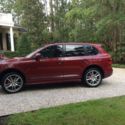 2009 Porsche Cayenne GTS Tiptronic 81,000 Miles Red Black Interior
2009 Porsche Cayenne GTS Tiptronic 81,000 Miles Red Black Interior
Mileage: 81,201
 2006 Porsche Cayenne Turbo S Twin Turbo 520Hp Navi Bose Tiptronic TipTronic 2-Do
2006 Porsche Cayenne Turbo S Twin Turbo 520Hp Navi Bose Tiptronic TipTronic 2-Do
Mileage: 64,749
 Porsche Cayenne Tiptronic
Porsche Cayenne Tiptronic
Mileage: 79,643
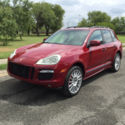 Porsche Cayenne GTS Tiptronic AWD
Porsche Cayenne GTS Tiptronic AWD
Mileage: 100,561
 2010 Porsche Cayenne Tiptronic
2010 Porsche Cayenne Tiptronic
Mileage: 91,891
 2012 PORSCHE CAYENNE 3.6 TIPTRONIC
2012 PORSCHE CAYENNE 3.6 TIPTRONIC
Mileage: 50,900
 2012 Porsche Cayenne Tiptronic
2012 Porsche Cayenne Tiptronic
Mileage: 63,599
